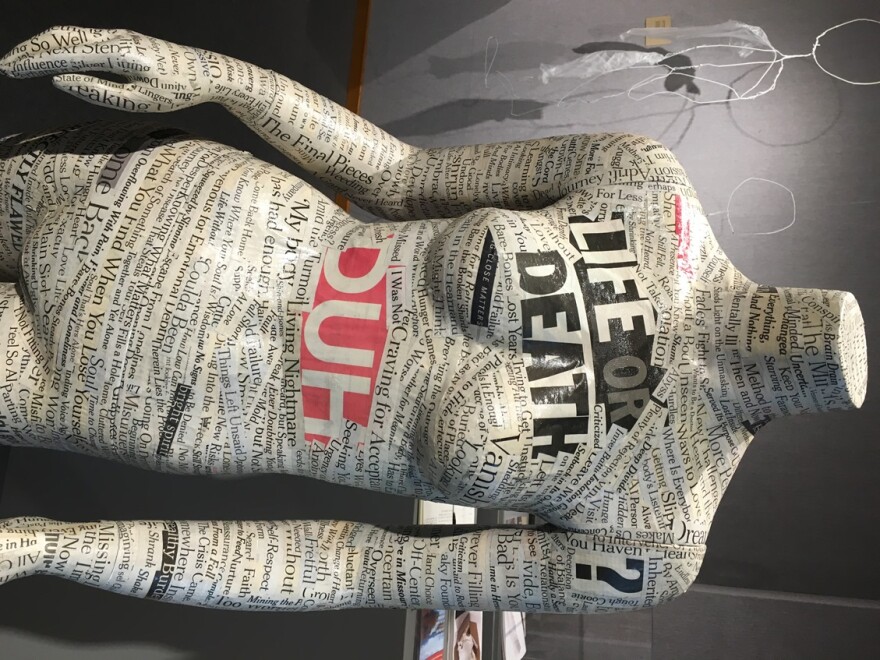For most of her life, Judith Shaw didn’t think she had a problem with food and she certainly didn’t consider herself artistic.
Then 10 years ago at the age of 53, the Clayton resident sought treatment for her anorexia. She responded to one therapeutic assignment by tracing her gaunt pound body and gluing words like “help” and “pain” to the outline. Later she traced her fuller figure and added things like puzzle pieces.
“I’m spilling my guts in pictures and words and shapes and forms,” Shaw said.
‘Many people have a hole’

Shaw continued to make art. She named the collection “Body of Work,” and began showing it in galleries and medical schools. Nowit’s on display at Maryville University where it will stay up through Friday,
Feb. 26, the end of National Eating Disorders Awareness Week.
The process of making art helps Shaw cope with her eating disorder and her fears.
“It’s really about my thoughts and my flaws and my vulnerabilities, which is, in many cases, what an eating disorder is trying to cover up or mask or hide,” Shaw said. “And now, I show them on the walls for everybody to see.”
Shaw says you don’t have to have an eating disorder to relate to it.

“Many people have a hole, and we try to fill it with something,” Shaw said.
Shaw said she’s filling that hole by continuing to discover herself and love herself. It feels like a fresh start.
“A lot of people my age sort of feel like they have limited time left in their lives to do some of the things they hoped they would accomplish,” she said. “But I feel like my life is just beginning because I am becoming who I was meant to be.”
Older women, increased risks

Now, Shaw is a woman on a mission. She’s shown her art at several medical schools, including those at M.I.T. and Washington University in St. Louis, to help doctors gain a deeper understanding of their patients with eating disorders.
Thirteen percent of women 50 and older have an eating disorder.
Thirteen percent of women 50 and older deal with anorexia, bulimia or binge eating, according to the National Eating Disorders website. These older women face increased risks of eating-disorders consequences affecting their digestive systems, hearts, bones and teeth.
Shaw hopes her art will inspire others like her to get help.
“It’s very touching to me that the work can help people explore and examine and expose their own issues,” Shaw said.
Do you have an eating disorder? Take this quizto find out more.
Follow Nancy Fowler on Twitter: @NancyFowlerSTL







